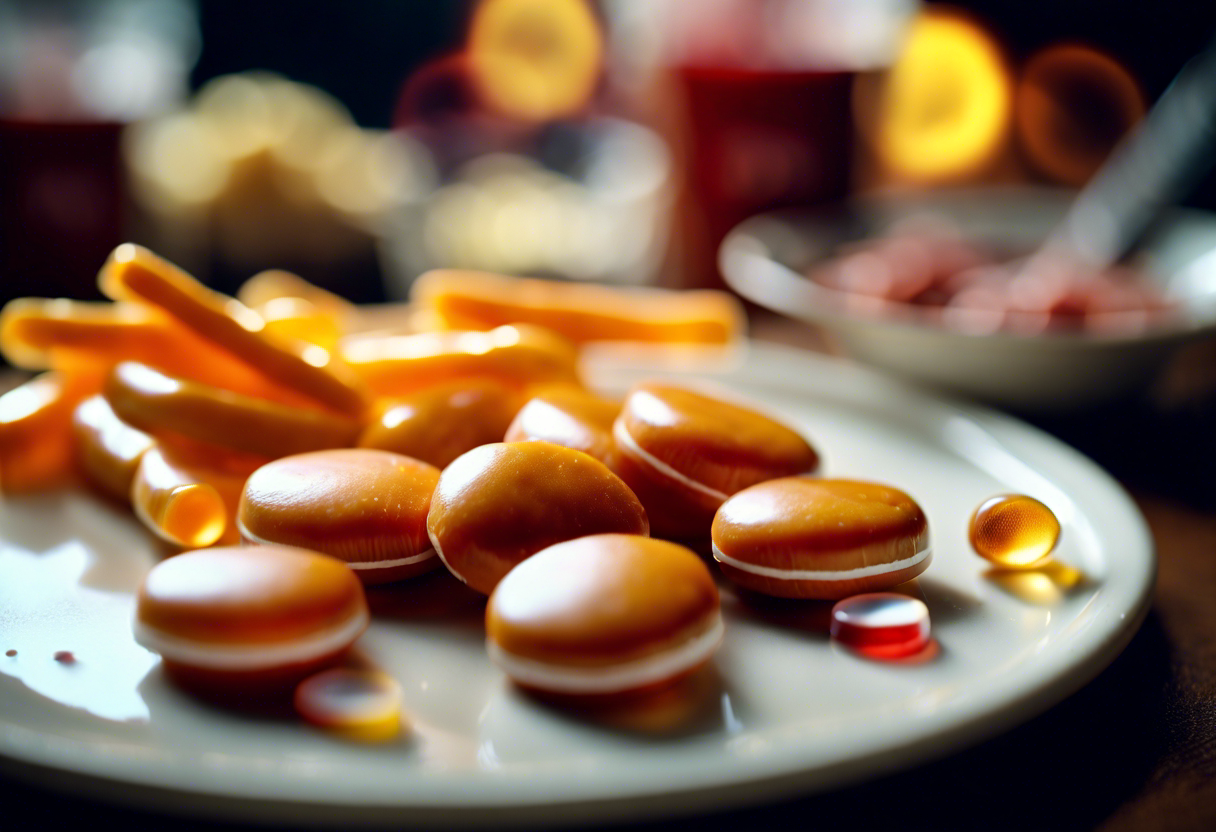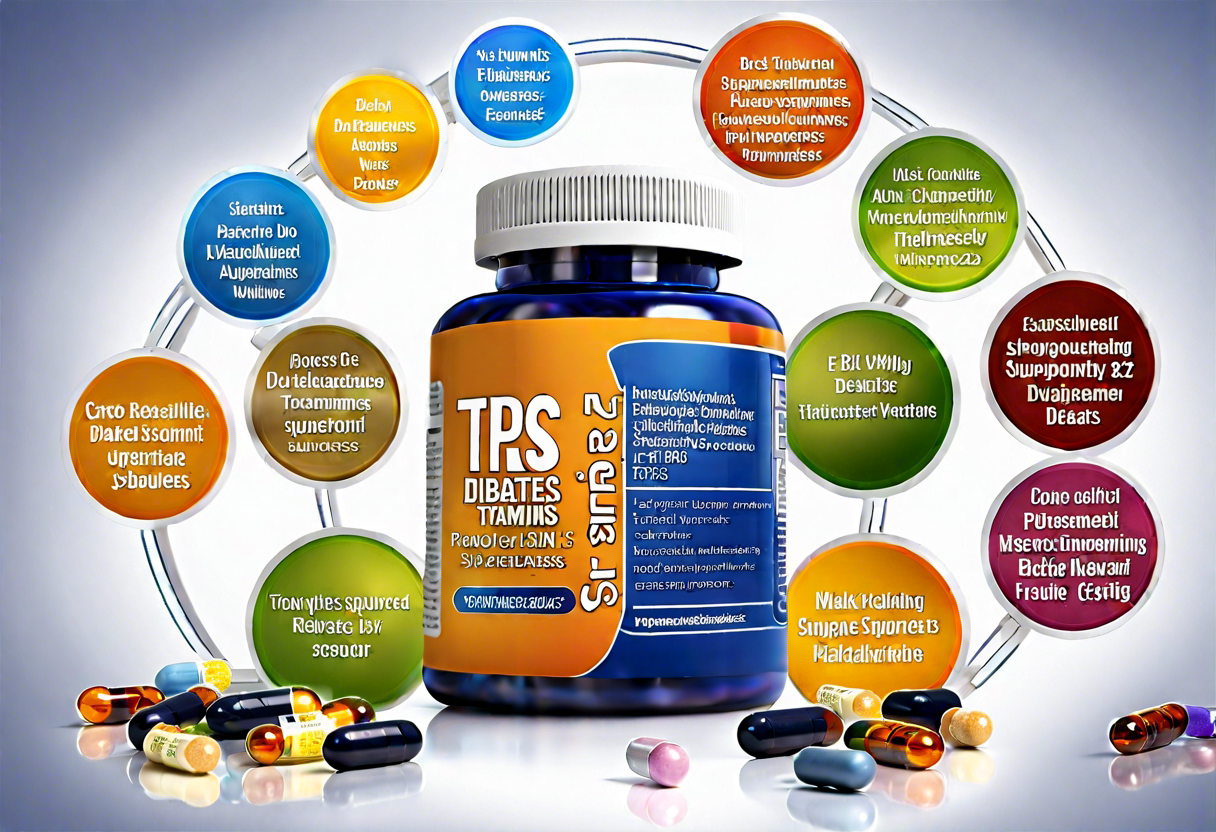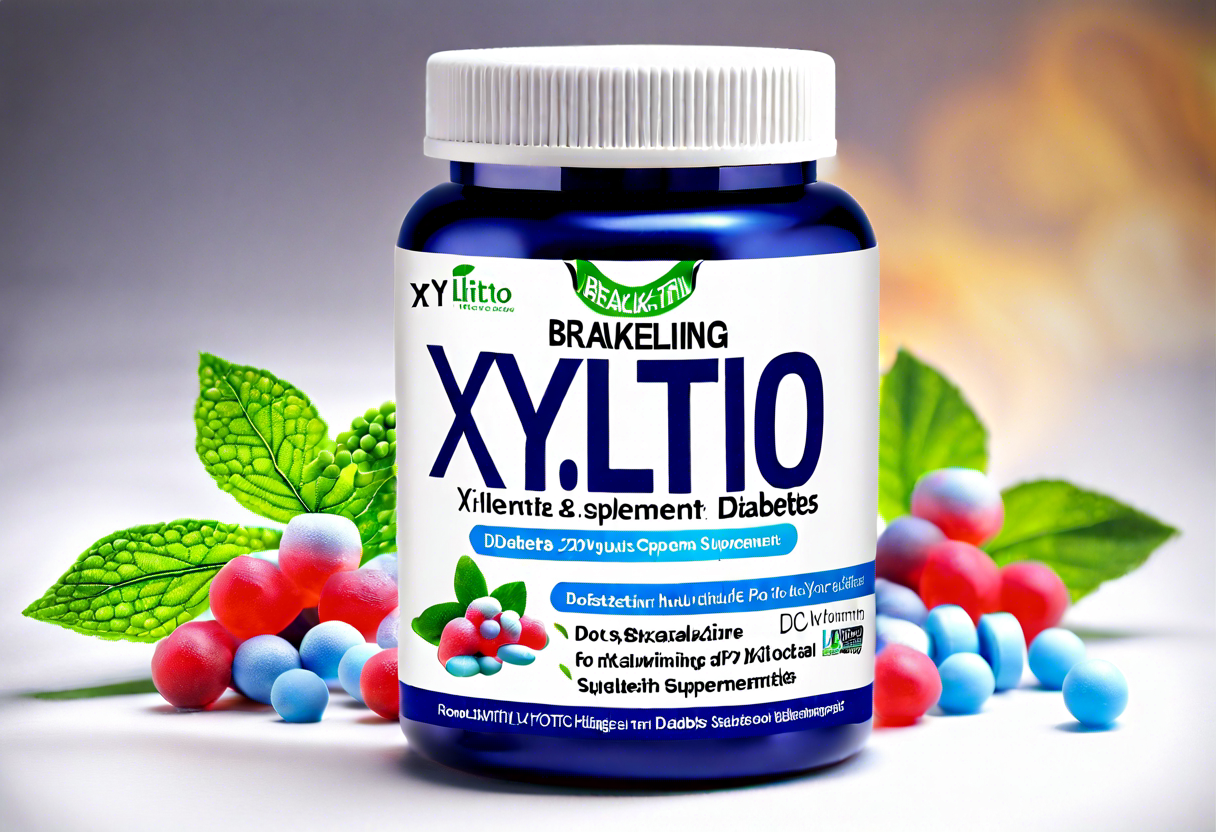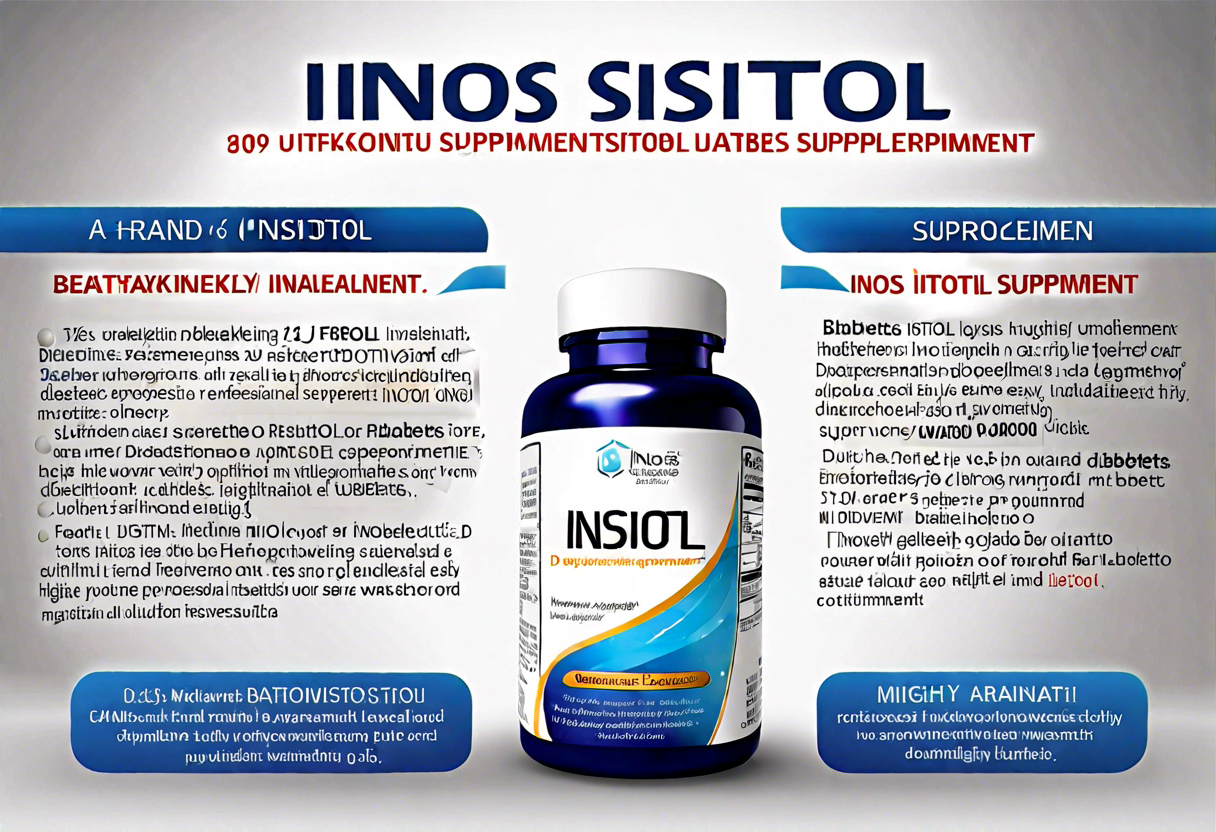Understanding Type 2 Diabetes: Causes, Symptoms, and Risk Factors
Type 2 diabetes is a chronic condition that affects how your body metabolizes sugar (glucose), the main source of fuel for your body. It occurs when your body becomes resistant to the insulin produced by your pancreas, or when the pancreas doesn’t produce enough insulin. Insulin is a hormone that helps regulate blood sugar levels.
There are several risk factors for developing type 2 diabetes. One of the main factors is being overweight or obese, as excess body fat can make your cells more resistant to insulin. Other risk factors include having a family history of diabetes, being physically inactive, and having high blood pressure or high cholesterol levels.
The symptoms of type 2 diabetes can vary, but common signs include frequent urination, increased thirst, unexplained weight loss, fatigue, blurred vision, and slow healing of wounds. It is important to note that some people with type 2 diabetes may not experience any symptoms initially.
A healthy diet is crucial for managing type 2 diabetes. By making smart food choices, you can better control your blood sugar levels and reduce the risk of complications associated with the condition.
Foods to avoid with type 2 diabetes are those that are high in refined carbohydrates and added sugars. These include sugary beverages such as soda, fruit juices, and energy drinks. The high sugar content in these drinks can cause a rapid increase in blood sugar levels, putting additional strain on your body’s insulin production.
Processed and packaged snacks, such as cookies, cakes, and potato chips, should also be limited or avoided. These snacks are typically high in unhealthy fats, added sugars, and refined carbohydrates. Instead, choose healthier snack options like nuts, seeds, and fresh fruits or vegetables.
White bread, white rice, and pasta made from refined grains are also best avoided. These foods have a high glycemic index, meaning they can cause a rapid spike in blood sugar levels. Opt for whole grains like brown rice, whole wheat bread, and whole wheat pasta, as they are higher in fiber and help regulate blood sugar levels.
It’s important to be mindful of your carbohydrate intake overall, as carbohydrates have the most significant impact on blood sugar levels. Instead of completely eliminating carbohydrates from your diet, focus on consuming healthy, complex carbohydrates that are high in fiber. These include fruits, vegetables, whole grains, and legumes.
Managing type 2 diabetes starts with understanding the condition and making positive dietary choices. Avoiding foods that are high in refined carbohydrates and added sugars is paramount. a well-balanced diet that is rich in whole grains, lean proteins, and healthy fats can help stabilize blood sugar levels and promote overall health.
The Role of Diet in Managing Type 2 Diabetes
Proper management of type 2 diabetes involves making healthy lifestyle choices, and one of the most important factors is maintaining a balanced diet. Your food choices play a crucial role in controlling blood sugar levels and preventing complications associated with diabetes. By following a nutritious diet, you can improve insulin sensitivity and reduce the risk of heart disease, obesity, and other health problems.
When it comes to managing type 2 diabetes, it is essential to understand which foods to avoid. Some foods can cause a sudden spike in blood sugar levels, leading to imbalances in insulin production. By eliminating or minimizing these foods from your diet, you can better control your blood sugar levels and overall health.
Processed and sugary foods should be at the top of your list to avoid. These include sugary drinks like soda and fruit juices, as well as desserts, candies, and pastries. These foods are high in added sugars and can rapidly increase blood sugar levels, straining your body’s ability to produce insulin. Opt for natural sugars found in fruits instead.
Simple carbohydrates are another type of food to avoid with type 2 diabetes. These include white bread, rice, and pasta, which are rapidly digested and can cause a sudden surge in blood sugar levels. Instead, choose whole grain alternatives like brown rice, whole wheat bread, and whole wheat pasta, which contain more fiber and have a lower glycemic index.
Trans fats and saturated fats should also be limited in your diet. These unhealthy fats can raise cholesterol levels and increase the risk of heart disease. Avoid fried foods, processed snacks, and fatty cuts of meat. Instead, choose healthier fats like those found in avocado, nuts, and olive oil. omega-3 fatty acids from sources like fatty fish can also provide numerous benefits for people with type 2 diabetes.
Salt is another ingredient to be cautious of when managing type 2 diabetes. A high-sodium diet can contribute to high blood pressure, which is common in individuals with diabetes. Avoid processed and packaged foods that are often loaded with sodium. Instead, opt for fresh, whole foods and use herbs and spices to add flavor to your meals.
Alcohol is best consumed in moderation or avoided altogether if you have type 2 diabetes. Drinking alcohol can cause a drop in blood sugar levels, which can be risky, especially if you are taking certain diabetes medications. If you choose to drink, do so in moderation and always monitor your blood sugar levels closely.
Maintaining a healthy diet is essential for managing type 2 diabetes effectively. Avoiding sugary and processed foods, simple carbohydrates, unhealthy fats, excessive salt, and alcohol can significantly improve your overall blood sugar control and reduce the risk of complications. By making smart food choices and incorporating a variety of nutrient-dense foods into your diet, you can take control of your diabetes and live a healthier, more fulfilling life.
The Worst Foods for Type 2 Diabetes: What to Avoid
When it comes to managing type 2 diabetes, making healthy food choices is crucial. Certain foods can cause a spike in blood sugar levels and lead to complications for individuals with this condition. To effectively manage type 2 diabetes, it is important to know which foods to avoid. Here, we discuss some of the worst foods for type 2 diabetes and why they should be eliminated from your diet.
Sugary beverages, such as soda and fruit juices, are some of the biggest culprits when it comes to unhealthy food choices for individuals with type 2 diabetes. These beverages contain large amounts of added sugars, which can lead to a rapid increase in blood sugar levels. Additionally, they offer little to no nutritional value. It is best to avoid these sugary drinks altogether and opt for water or unsweetened beverages instead.
Processed and refined carbohydrates, including white bread, pasta, and pastries, should also be avoided by those with type 2 diabetes. These foods are high in carbohydrates and low in fiber, leading to a quick rise in blood sugar levels. Instead, individuals with diabetes should opt for whole grain alternatives, such as whole wheat bread and pasta, which are higher in fiber and have a slower impact on blood sugar.
Trans fats, commonly found in processed and fried foods, should be eliminated from the diet of individuals with type 2 diabetes. These fats not only increase the risk of heart disease but also lead to inflammation and insulin resistance. It is important to read food labels carefully and avoid products that contain partially hydrogenated oils, which are the primary source of trans fats.
Highly processed snacks, such as chips, cookies, and crackers, are also detrimental to individuals with type 2 diabetes. These snacks are typically high in unhealthy fats, added sugars, and refined carbohydrates. Instead, opt for healthier snack options such as nuts, seeds, or fresh fruits and vegetables.
Sugary desserts and sweets should be enjoyed in moderation or avoided altogether for individuals with type 2 diabetes. These treats are typically high in added sugars and can cause a sharp increase in blood sugar levels. Choosing healthier alternatives, such as sugar-free or low-sugar desserts, can still satisfy your sweet tooth without negatively impacting blood sugar levels.
Individuals with type 2 diabetes should avoid consuming sugary beverages, processed and refined carbohydrates, trans fats, highly processed snacks, and sugary desserts. By making these dietary adjustments, you can better manage your blood sugar levels and reduce the risk of complications associated with type 2 diabetes.
Healthy Food Swaps for Type 2 Diabetes: Making Better Choices
Living with type 2 diabetes means making conscious choices about what you eat. To manage your blood sugar levels and maintain overall health, it is essential to adopt a nutritious and balanced diet. Making healthy food swaps can make a significant difference in managing your condition. By replacing unhealthy options with more wholesome alternatives, you can enjoy delicious meals while keeping your blood sugar levels in check. Here are some practical food swaps to consider:
-
Choose Whole Grains Over Refined Grains: Whole grains are packed with fiber and essential nutrients, making them a smart choice for individuals with type 2 diabetes. Opt for whole wheat bread, brown rice, and whole grain pasta instead of their refined counterparts. These options have a lower glycemic index, meaning they cause a slower rise in blood sugar levels.
-
Swap Sugary Drinks for Water: Sugary beverages, such as soda and fruit juices, can cause significant spikes in blood sugar levels. Replace these sugary drinks with water, herbal tea, or unsweetened beverages. Staying hydrated with water not only helps manage blood sugar levels but also promotes overall health.
-
Choose Lean Proteins: When it comes to protein sources, opt for lean options like skinless poultry, fish, legumes, and tofu. These alternatives are lower in saturated fats and can help maintain a healthy weight. Avoid processed meats like sausages, bacon, and hot dogs as they are often high in sodium and unhealthy fats.
-
Swap Unhealthy Fats for Healthy Fats: Incorporate healthy fats, such as avocados, nuts, and olive oil, into your diet. These fats are rich in omega-3 fatty acids and can aid in reducing inflammation and improving heart health. Avoid trans fats found in fried and processed foods as they can increase the risk of heart disease.
-
Opt for Low-Glycemic Index Fruits: While fruits are generally healthy, it is important to choose options with a lower glycemic index to prevent blood sugar spikes. Berries, cherries, apples, and pears are excellent choices for managing type 2 diabetes. Avoid fruits with a higher glycemic index, such as watermelon and pineapple, and consume them in moderation.
-
Choose Non-Starchy Vegetables: Non-starchy vegetables are rich in fiber, vitamins, and minerals, and have a minimal impact on blood sugar levels. Incorporate leafy greens, broccoli, cauliflower, peppers, and zucchini into your meals. These vegetables add volume and flavors to your dishes without causing a significant rise in blood sugar.
-
Swap Processed Snacks for Nutritious Alternatives: Instead of reaching for sugary snacks and packaged chips, opt for healthier options. Snack on nuts, seeds, Greek yogurt, or cut-up vegetables with hummus. These choices provide essential nutrients and are lower in added sugars and unhealthy fats.
Remember, it is always a good idea to consult with a registered dietitian or healthcare professional to create a personalized meal plan that suits your specific needs and preferences. By making these food swaps, you can take control of your diet and effectively manage type 2 diabetes while still enjoying delicious and nutritious meals.
Tips for Dining Out with Type 2 Diabetes
Dining out can be a fun and enjoyable experience, but it can also present challenges for individuals with type 2 diabetes. The temptation to indulge in unhealthy foods and the lack of control over the cooking process can make it difficult to stick to a diabetes-friendly diet. However, with the right strategies and mindset, it is possible to make healthy choices and manage your blood sugar levels while still enjoying a meal out. Here are some practical tips for dining out with type 2 diabetes.
-
Plan ahead:
Before heading out to a restaurant, take some time to research the menu options. Many restaurants now provide their menus online, allowing you to pre-plan your meal and choose healthier options. Look for dishes that are low in added sugars, saturated fats, and sodium. Opt for lean protein sources such as grilled chicken or fish, and choose steamed or roasted vegetables instead of fried options. -
Watch your portion sizes:
Restaurant portions are often larger than what we need, and this can lead to overeating and spikes in blood sugar levels. Consider sharing an entrée with a dining companion or ask for a to-go box at the beginning of your meal and portion out a suitable serving size. Listen to your body’s hunger and fullness cues to avoid overeating. -
Customize your order:
Don’t be afraid to ask for modifications to suit your dietary needs. Most restaurants are willing to accommodate special requests. Ask for grilled or baked options instead of fried, request dressings or sauces on the side, and choose whole grain options whenever possible. Aim to include a balance of lean protein, fiber-rich carbohydrates, and healthy fats in your meal. -
Be mindful of beverages:
Sugary drinks like soda, sweetened iced tea, and alcoholic beverages can significantly impact blood sugar levels. Opt for water, unsweetened tea, or sparkling water with a splash of lemon or lime instead. If you choose to drink alcohol, do so in moderation and avoid sugary mixers or cocktails. -
Practice portion control with desserts:
If you have a craving for something sweet, consider sharing a dessert with others at the table or choose a smaller portion size. Look for options that are naturally sweetened with fruit or those that are sugar-free. Fresh fruit can also be a satisfying and nutritious way to finish your meal. -
Stay mindful of your overall diet:
If you know you will be dining out, try to balance your meals earlier in the day. Opt for lighter, nutrient-dense meals and incorporate plenty of fiber-rich foods like whole grains, fruits, and vegetables. This will help regulate your blood sugar levels and make it easier to navigate the restaurant menu later on. -
Don’t be too hard on yourself:
Remember that enjoying a meal out is meant to be a pleasurable experience. If you do indulge in something outside of your usual diet, don’t beat yourself up over it. Instead, focus on making healthier choices moving forward and being mindful of portion sizes.
By following these tips, you can navigate the challenges of dining out with type 2 diabetes and make choices that support your overall health and well-being. Remember, small changes can add up to significant improvements in managing your blood sugar levels and maintaining a balanced diet.
Conclusion
To effectively manage type 2 diabetes, understanding its causes, symptoms, and risk factors is crucial. Adopting a healthy diet plays a pivotal role in controlling blood sugar levels and preventing complications. By avoiding certain foods that can cause spikes in glucose levels, individuals with type 2 diabetes can take charge of their health and improve overall well-being. Instead, opting for healthier food options, portion control, and practicing mindful eating can make a significant difference in managing this condition. Additionally, being prepared when dining out and making smarter choices can help individuals with type 2 diabetes enjoy social gatherings without compromising their health goals.
Type 2 diabetes is a chronic condition characterized by the body’s inability to properly use insulin, leading to high blood sugar levels. Diet plays a central role in managing diabetes, as certain foods can exacerbate the condition. It is essential to avoid or limit the consumption of foods that can cause sudden spikes in blood sugar levels. These include sugary beverages, processed snacks, white bread, sugary cereals, and desserts high in refined sugar. By avoiding these foods, individuals can maintain better control over their blood glucose levels and prevent complications associated with uncontrolled diabetes.
Making better food choices is essential for managing type 2 diabetes. Instead of the worst foods mentioned earlier, there are healthier alternatives available. Whole grain options like brown rice and whole wheat bread have a lower glycemic index, promoting more stable blood sugar levels. lean proteins, such as poultry, fish, and legumes, can provide essential nutrients without causing drastic glucose fluctuations. Including a variety of colorful vegetables and non-starchy fruits rich in fiber can also help regulate blood sugar levels.
When dining out, individuals with type 2 diabetes should plan ahead to make the healthiest choices possible. Reviewing the menu in advance and choosing options that are grilled, baked, or steamed can reduce the intake of unhealthy fats. Requesting dressings and sauces to be served on the side allows for better portion control. Opting for water or unsweetened beverages instead of sugary drinks helps avoid unnecessary sugar intake. Sharing meals or taking leftovers home can also prevent overeating and help maintain balanced blood sugar levels.
Individuals with type 2 diabetes can effectively manage their condition by understanding its causes, symptoms, and risk factors. Adopting a healthy diet is paramount in this process. By avoiding or limiting the consumption of the worst foods for type 2 diabetes, individuals can gain better control over their blood sugar levels. Making healthier food swaps, like choosing whole grains, lean proteins, and fiber-rich fruits and vegetables, is an excellent step toward overall well-being. When dining out, being prepared and making smarter choices can help individuals enjoy social occasions while staying on track with their health goals. Taking charge of one’s diet plays a significant role in managing type 2 diabetes and living a balanced, healthy life.









